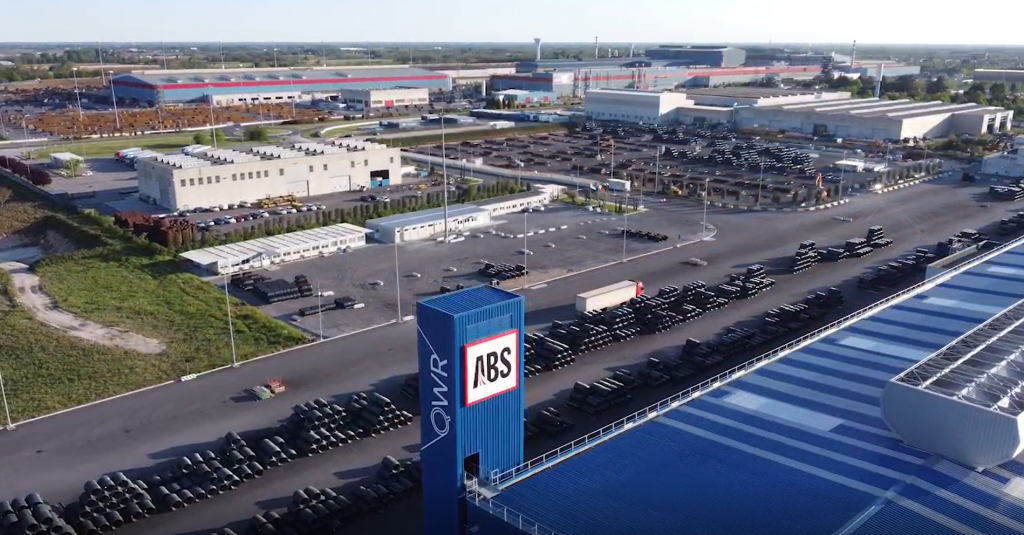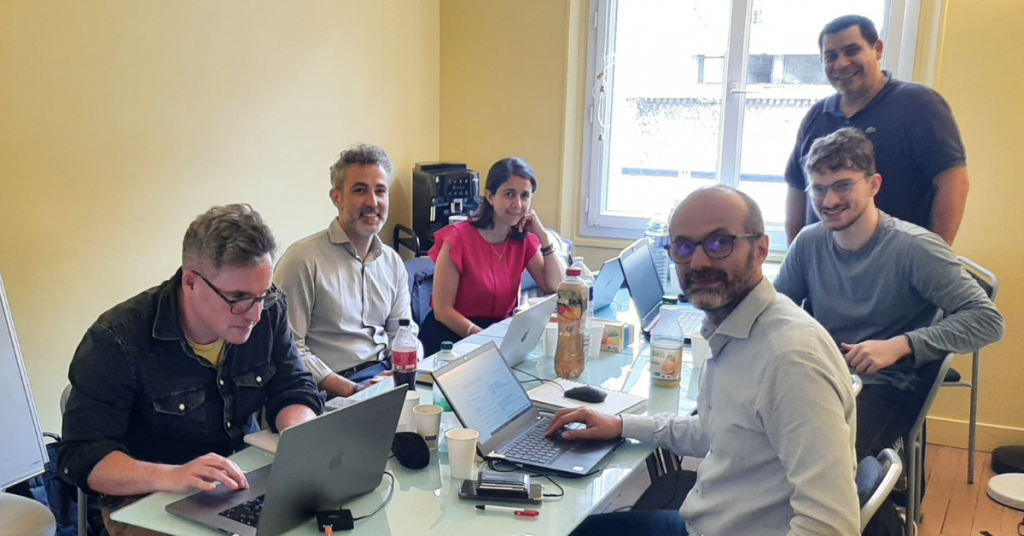Digital solutions to analogue challenges – coding for better traceability
4 mins to read
The steel production site of Acciaierie Bertoli Safau, ABS, for short, in Pozzuolo del Friuli in Italy is vast – its buildings and storage space cover the size of several football stadiums. It’s so big it even has its own train station, to which the main raw material is delivered: scrap metal. This raw material is then transformed and turned into a range of half-finished or finished goods which ABS supplies to customers across the globe.
To the outsider, trying to locate a certain batch of steel rods needed to produce wire in one of the most modern rolling mills in Europe seems a hopeless endeavour – just like looking for the proverbial needle in the haystack. COGNIMAN will do away with the logistical challenges, which range from batch location and production planning to storage complexities.


Solving logistical challenges
The solution is a three-dimensional map of the facilities which reflects the location of the steel batches in real time, so that batch handling can be optimised, thus increasing efficiency in logistics and safety in handling. Acquiring images with a drone is crucial for this endeavour, as they can be fed into a system to create a digital library.
To work towards this solution, six people stuck their heads together for three days in Paris, with project partners from ABS and DeepBlue joining online and supporting them with details and answers.
Building on solid foundations
The meeting happened at a point in time when several steps had already been taken: As a first step, ABS worked with Deep Blue, a consultancy that contributes to all aspects of human involvement as well as questions of ethics, to define the use case in detail.
They identified the people who would be impacted by process and technology changes suggested by COGNIMAN. Operators, production planners and supervisors of the rolling mill are what is called users in the use case. Depending on their tasks, each of them has a specific user story, which covers their occupation and their pain points.
Research centre NORCE, which not only coordinates the project, but also supports in several technical areas, had taken care of proper image recognition. No mean feat, as the drones need to capture details such as the barcode labels of the various steel batches while acquiring images from the area.
Montimage, as the primary technology provider for building digital twins with sensing and artificial intelligence capabilities for the use cases, took care of developing a digital twin, meaning a digital representation, of the stock park of the ABS facility.
Linking digital and analogue
“We met to refine the user stories for the ABS case by following a Scrum Agile methodology and integrating principles of design thinking to ensure user-centric solutions,” explains Wissam Mallouli, Chief Technology Officer of Montimage.
Agile helps break down tasks into small units and encourages frequent review and iteration for efficient work. Design thinking as a problem-solving approach emphasises empathy, experimentation and iteration. Employing design thinking, software professionals empathise with users’ needs, experiment with solutions and iterate based on feedback.
In the ABS use case, the digital twin of the facility needs to be populated with drone images to create a 3D real time library. An application, which needs to be designed and programmed, constitutes the link between the drone operator and the digital twin.

Creating a user-friendly experience
“To best create such an application, we need to understand what the operators do, what they care about or don’t care about, what their concerns are, and where they need help,” Donal Madden, data scientist, AI engineer and Scrum Master from project partner IBM explains.
“The interface of the ABS Logistics Assistant or ALA, as we call it, needs to make drone operators’ lives easier, so we are looking to design it for simplicity with minimal user interactions. Ideally, this could be deployed on a mobile phone in the future.”
The design thinking approach results in user-centred designs that are intuitive, engaging and effective. This is particularly important in COGNIMAN as all partners are aware that ease of use and a low threshold in using a new application or technology significantly increases acceptance on the user side – an aspect that is also consistently monitored by a team dedicated to ethical implementation of new technologies.
Refining user stories
The coding sessions at Montimage resulted in a refined description of the user stories in the backlog, thus making sure the design thinking approach is implemented in the application. “The level of detail we achieved in defining user stories was particularly impressive. This clarity will help ensure our application meets the precise needs of the operators and enhances overall efficiency,” commented Donal Madden.
The project partners also assessed the status of the development of the AI which serves to detect the steel batches. They discussed how to detect edges, lanes and contours of the environment, which is replicated in the digital twin, and how to visualise all these as well as how to integrate safety aspects.
Planning for the next review
With a view to the next meeting of all project partners in September, the group agreed on a demonstration scenario for the ABS use case, which they will present. “We want to show how the collected data with the drone can populate the digital twin with accurate information enhancing productivity and logistics,” said Wissam Mallouli. “I deeply appreciated the hard work and goal-oriented discussions during our sessions. The collaborative atmosphere was exceptional, fostering innovative ideas and efficient problem-solving. We enjoyed each other’s company and even went to see the Olympic flame being carried into Paris – Montimage is not far from where the convoy passed. That was a once-in-a-lifetime opportunity!”
